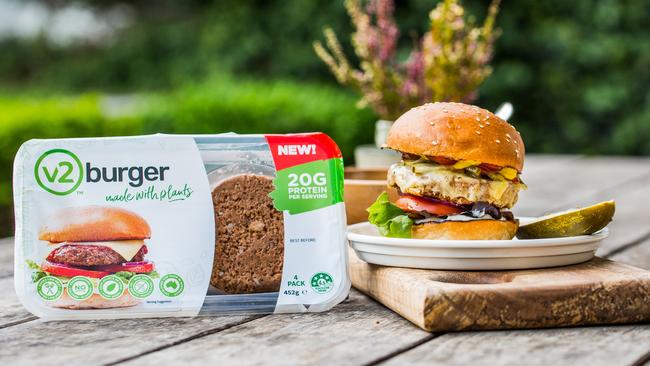CSIRO’s healthy appetite for innovation to fuel post-Covid growth

A study published in the Harvard Business Review in 2018 of 4700 public companies and their strategies during the 2007 recession suggested companies that carefully balance cost-cutting with new investment are best-placed to do well after a recession. These companies cut costs by focusing on operational efficiency and made significantly greater investments than their rivals in R&D, marketing and new assets.
Essentially, it is defensive and offensive moves such as these that we will be employing at CSIRO to support Australia’s agrifood businesses in recovery.
The strategy has the goal of supporting and growing a profitable, productive, trusted and sustainable sector into the future. We’ll be focusing on innovation at speed, embracing digital technologies and aligning our research to areas predicted to grow. Improving operational efficiency is a key tactic we are tackling through bigger and more transformational research programs that can achieve an impact at the scale we need.
Last year, in just eight months, CSIRO’s food texture and flavour experts, together with Competitive Foods and investor Main Sequence Ventures, were able to deliver a new plant-based food product to market. Beginning with a burger for Hungry Jack’s, v2food is already available in supermarkets and has secured $77m financing in its most recent fundraising round.
In August this year, another new company, FutureFeed, was launched to commercialise a livestock feed supplement made from seaweed that reduces methane emissions in cattle by more than 80 per cent. The company secured $13m in investment.
This week, we launched NutriV with Australia’s largest broccoli grower, Fresh Select, to market a range of nutritious, condensed vegetable powders from food that would otherwise have gone to waste.
Each of these companies responds to a major sustainability challenge and capitalises on a market opportunity. The plant-based protein market is expected to reach $6.6bn in Australia by 2030. Food waste costs our economy an estimated $20bn each year — 20 per cent of all the vegetables grown in Australia are wasted.
These companies are examples of market-led innovation at speed, co-created with Main Sequence Ventures (CSIRO’s venture capital partner) and industry partners. We plan to scale this model to launch a portfolio of companies.
We expect to see significant growth in key areas where we already have a strong track record in research and impact. These include aquaculture, where the global industry is growing by about 8 per cent per annum, and healthy and sustainable food products, which are expected to be worth about $25bn in a decade.
To capitalise on this growth, we’ll be investing more resources in these areas, deploying cutting-edge technologies that can be applied to the manufacture of healthy foods, and creating Australian products that can enter both local and global markets.
There is no question the pandemic has accelerated our uptake of digital technologies. Analysis by McKinsey suggests we moved five years forward in consumer and business digital adoption in the space of about eight weeks.
Agriculture may not have seen such rapid improvement, but there are enormous potential gains right across the value chain. One of these is in our regulatory systems and in verifying our “clean and green” credentials to help increase Australia’s agrifood exports into high-end markets. Another is in growing our suite of digital tools that help farmers minimise risk and make decisions based on data that is delivered to them in an accessible and timely way.
Another strategic shift we’ll be making in our agrifood research at CSIRO is to carefully select our strategic partners, leveraging each other’s strengths so we can do science at scale to create greater impact. This will involve forming alliances with universities and other research institutes with complementary skills. For example, we are working with multiple partners to co-create a national food industry hub to enhance end-to-end food manufacturing innovation capability.
We’re creating large-scale, major scientific and collaborative research initiatives focused on drought resilience, future protein and driving our trusted agrifood exports.
Rebalancing what we are doing now to focus on our strengths and opportunities, to increase the scale of our impact and to embrace digital technologies will set us up for a healthy post-COVID, post-drought recovery. It will also ensure we stay at the forefront of science so we can continue to deliver the transformational research we’ve been doing in support of our agrifood industry for more than a century.
Dr Michiel van Lookeren Campagne is director CSIRO Agriculture and Food.



After years in drought, most grain-growing regions in Australia are about to pull in their first decent crop in a long time. For our livestock farmers, the recovery will be slower as they rebuild herds and flocks. If it wasn’t for COVID-19, we might be more optimistic about this bumper harvest the Australian Bureau of Agricultural and Resource Economics and Sciences forecasts. It sees a 91 per cent increase in wheat production on last year and potentially the biggest crop since the record high of 2016-17. But global economic decline and decreased consumer demand due to the pandemic have lowered prices, and Australia’s agricultural export earnings are not predicted to increase. This is what recession looks like. We need science and innovation at speed in the agrifood sector to help dig us out of this hole.